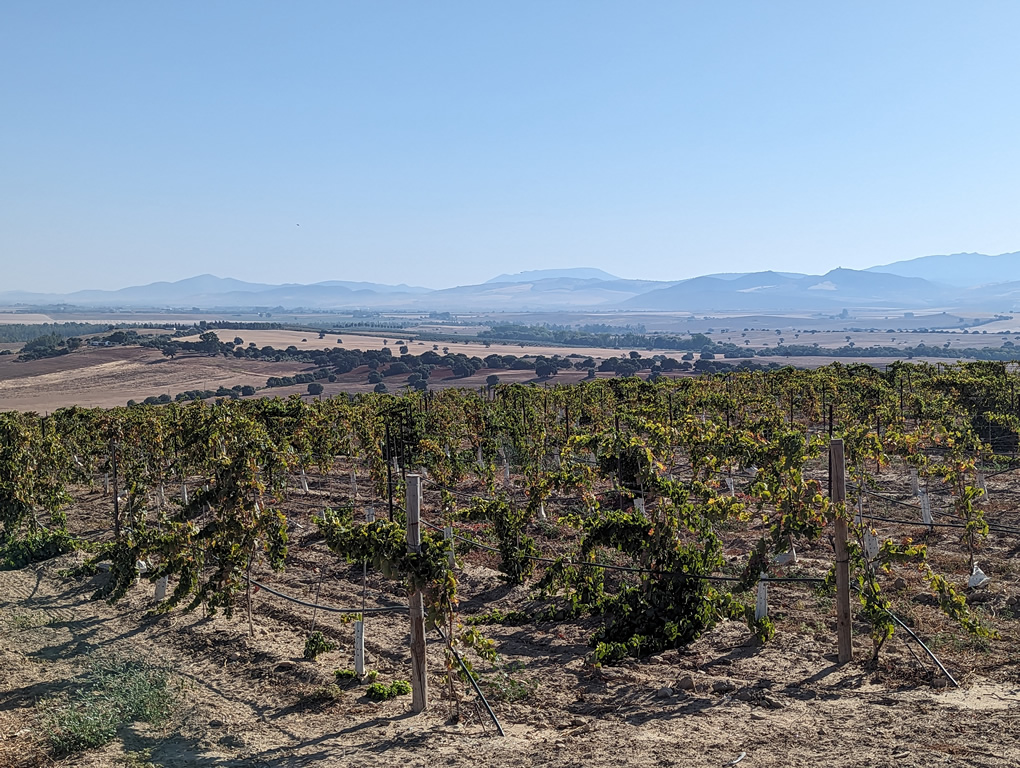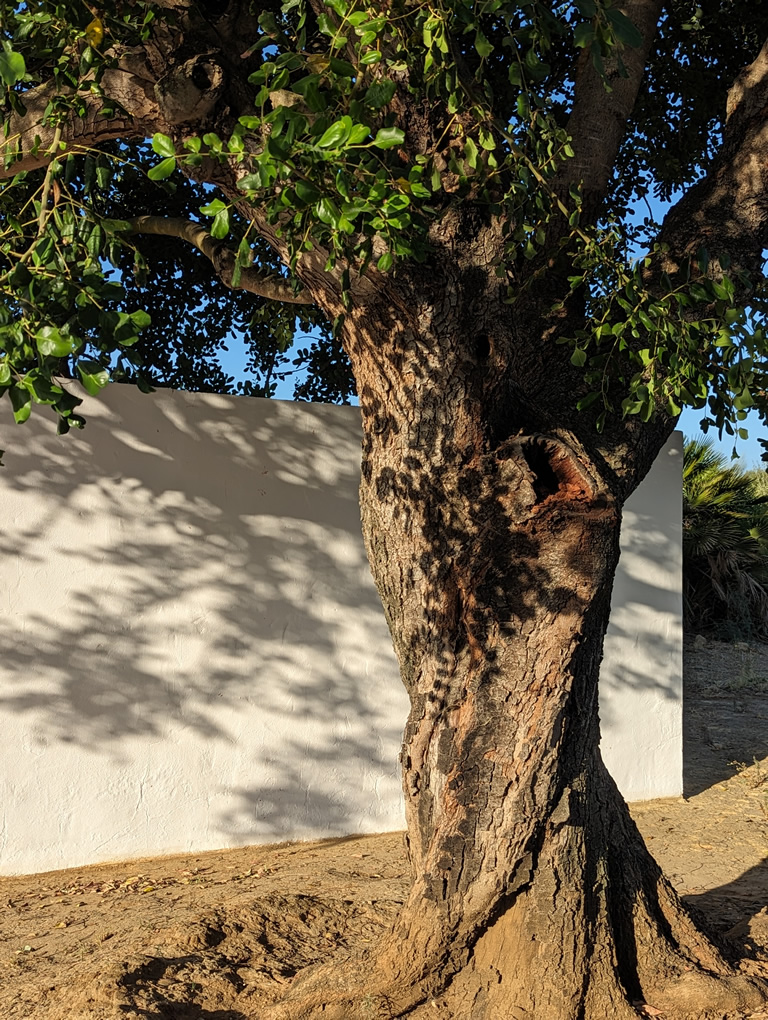Andalusia
The wines of Andalusia

Wine Map of Andalusia DO appellations: https://vineyards.com/wine-map/spain/andalusia
Wine Map of Andalusia IGP/PGI : https://vineyards.com/wine-map/spain/andalusia/andalusia-igp
The cultivation of vines in Andalusia dates from many
centuries ago and the region is well known for the production of respected
wines which are recognized all over the world. Wine in Andalusia means “fortified
wine”, sherry being the most popular.
The climate, the topography and the geology of Andalusia are all
ideal for the cultivation of vines. The Mediterranean climate with its mild
temperatures, the long hours of sunshine in combination with the altitude,
create wines of
exceptional quality, with a wide variety of characteristics and types.
There are over 40.000 Hectares of vineyards in Andalusia, most of them belonging to one of these six Appellations or Denominations of Origin: Jerez-Xérès-Sherry (1933), Condado de Huelva (1933), Málaga (1933), Manzanilla de Sanlúcar (1964), Montilla-Moriles (1985), and Sierras de Málaga (2001).
Vineyards of Andalucía: Regions and Their Wine Particularities
1. Jerez-Xérès-Sherry DO (Sherry Wine)
Notable Wines:
- Fino: A dry, pale Sherry with flavors of almonds, citrus, and a saline quality, influenced by the flor yeast.
- Manzanilla: A sub-style of Fino produced only in Sanlúcar de Barrameda, offering a lighter, more delicate, and salty character.
- Amontillado: Begins as a Fino, but with oxidative aging, develops flavors of hazelnuts, toffee, and a richer, deeper body.
- Oloroso: A dark, rich Sherry with oxidative aging, offering flavors of dried fruits, nuts, and caramel. It can be dry or sweetened to create Cream Sherry.
- Palo Cortado: A rare and complex Sherry with the freshness of Amontillado and the richness of Oloroso, featuring flavors of dried fruit, toffee, and spices.
- Pedro Ximénez (PX): A very sweet Sherry made from sun-dried Pedro Ximénez grapes, offering flavors of raisins, figs, and molasses.
Particularities:
Jerez is the birthplace of Sherry, one of the world’s most famous fortified wines. Located in Cádiz, it is the heart of Sherry production and utilizes a unique aging process called the solera system, which blends younger and older wines together. Jerez's dry, hot summers and cooling Atlantic breezes create the perfect conditions for growing Palomino, Pedro Ximénez, and Moscatel grapes. Sherry is a versatile wine with styles ranging from bone-dry (Fino and Manzanilla) to rich and syrupy (Pedro Ximénez).
2. Montilla-Moriles DO
Notable Wines:
- Pedro Ximénez (PX): Similar to the PX from Jerez, Montilla-Moriles' Pedro Ximénez is a rich, intensely sweet wine made from sun-dried grapes, with flavors of figs, raisins, dates, and molasses.
- Fino: In Montilla-Moriles, Fino is also made, though it is typically stronger and richer than Fino from Jerez due to the local climate and soils.
- Amontillado & Oloroso: Both these styles are also produced here, but Montilla-Moriles is primarily known for its Pedro Ximénez.
Particularities:
Montilla-Moriles, located inland from Jerez, is famous for its Pedro Ximénez wines. Unlike Jerez, Montilla-Moriles doesn’t typically need to fortify its wines, as the natural alcohol levels of the wines are higher due to the region’s extremely hot and dry climate. The unique albariza soil, rich in chalk, helps to retain moisture in the vineyards. While similar to Jerez, the wines from Montilla-Moriles often have a more intense flavor due to the differences in climate and winemaking traditions.
3. Málaga DO & Sierras de Málaga DO
Notable Wines:
- Málaga Dulce Natural: A sweet wine made from Pedro Ximénez or Moscatel grapes. These wines can be intensely sweet with flavors of honey, candied fruits, raisins, and caramel.
- Moscatel: Sweet or semi-sweet wines made from the Muscat grape, with fresh, floral, and citrusy aromas and flavors of orange blossom, apricots, and honey.
- Dry Wines: In recent years, there has been an increasing production of dry white, rosé, and red wines under the Sierras de Málaga DO.
Particularities:
Málaga is one of the oldest wine-producing regions in Spain, famous for its sweet dessert wines made from sun-dried Pedro Ximénez and Moscatel grapes. These wines were popular throughout Europe centuries ago and are still prized today. The grapes are often dried on straw mats under the hot sun to concentrate their sugars. While traditionally focused on sweet wines, Málaga has recently diversified, producing excellent dry wines, particularly from Muscat and red varieties like Cabernet Sauvignon, Syrah, and Tempranillo in the Sierras de Málaga DO.
4. Condado de Huelva DO
Notable Wines:
- Condado Palido (Fino-style): A dry, pale wine aged under flor similar to Fino Sherry, but made from the Zalema grape.
- Condado Viejo (Oloroso-style): A richer, darker wine aged oxidatively like Oloroso, also produced from Zalema.
Particularities:
Located near the Guadalquivir River and the Atlantic coast, Condado de Huelva is known for producing fortified wines similar to those from Jerez but made from local grapes like Zalema. This region is less well-known internationally, but its Fino-style wines (Condado Pálido) and Oloroso-style wines (Condado Viejo) showcase the unique qualities of the region's native grape varieties.
5. Sierras de Granada DO
Notable Wines:
- Red Wines: Made from Tempranillo, Cabernet Sauvignon, Garnacha, and Syrah, with fresh, bright acidity and flavors of red fruits, spices, and herbs.
- White Wines: Made from Chardonnay, Macabeo, Sauvignon Blanc, and Moscatel, typically offering crisp acidity and flavors of citrus and tropical fruits.
Particularities:
Situated in the mountains of Granada, the Sierras de Granada DO produces high-quality red and white wines at higher altitudes, benefiting from cooler temperatures and a longer growing season. The wines from this region tend to have a fresh and vibrant character, with good acidity due to the altitude, which balances the hot Andalusian climate. These wines are a more modern expression of Andalucía’s winemaking tradition and are gaining international attention.
6. Lebrija DO
Notable Wines:
- Fortified Wines: Similar to those made in Jerez, including Fino, Amontillado, and Oloroso, but using the local grape variety Palomino Fino.
- Dry and Sweet Wines: Lebrija also produces dry red and white wines, as well as some sweet wines using Moscatel and Pedro Ximénez.
Particularities:
Lebrija, located just north of Jerez, is a small but distinctive DO producing wines very similar to those from Jerez due to its proximity. The wines, particularly the fortified styles, are often compared to Sherry, though the soils and microclimates can give them their own character. Lebrija’s wines have historically been overshadowed by Jerez, but they are increasingly recognized for their quality.
Summary of Notable Wine Styles in Andalucía
- Fino & Manzanilla (Jerez, Sanlúcar de Barrameda): Pale, dry, and delicate Sherries, aged under flor, with fresh, saline, and almond flavors.
- Amontillado (Jerez, Montilla-Moriles): A hybrid of biological and oxidative aging, offering nutty, richer flavors while maintaining a dry finish.
- Oloroso (Jerez, Montilla-Moriles): Dark, oxidative Sherry with deep, rich flavors of dried fruits, nuts, and caramel. Can be dry or sweetened to make Cream Sherry.
- Palo Cortado (Jerez): A rare style with the finesse of an Amontillado and the richness of Oloroso.
- Pedro Ximénez (PX) (Jerez, Montilla-Moriles, Málaga): An intensely sweet dessert wine with flavors of raisins, figs, and molasses.
- Moscatel (Málaga, Sierras de Málaga): Sweet, floral, and fruity wines made from Muscat grapes.
- Dry Red & White Wines (Sierras de Málaga, Sierras de Granada): Modern expressions from Andalucía’s inland mountainous areas, with a focus on international grape varieties and fresh, vibrant flavors.
In Conclusion: Andalucía’s diverse regions produce a wide variety of wines, from the world-famous Sherry in Jerez and sweet wines of Málaga to increasingly respected dry table wines from areas like Granada and Sierras de Málaga. The region’s combination of history, tradition, and innovation makes it a fascinating destination for wine lovers.
